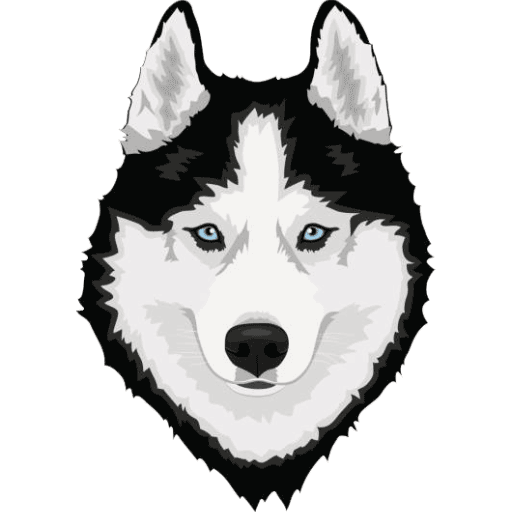Training a Husky can be difficult, but if you use the right training method and follow best practices, you can achieve some impressive results.
In this guide, you will learn some best practices, effective training methods, and common mistakes to avoid when training your Husky.
The more of these training tips you can incorporate into your training, the better results you will get.
Find out more about overcoming the difficulty of training a Husky in this guide.
Husky Training Tips
Here are some best practices and general training tips to use when training your Husky.
After you read through these tips, keep reading for some common training mistakes people make with their Huskies.
Train in Different Environments
Asking your Husky to sit at home is different than asking it to sit at a park, at the Vet, or in a crowded street.
When you train your Husky to listen to a command, you need to remember that the context matters.
Your Husky may perfectly obey your commands at home, but in different contexts, they may suddenly ‘forget’ all of their training.
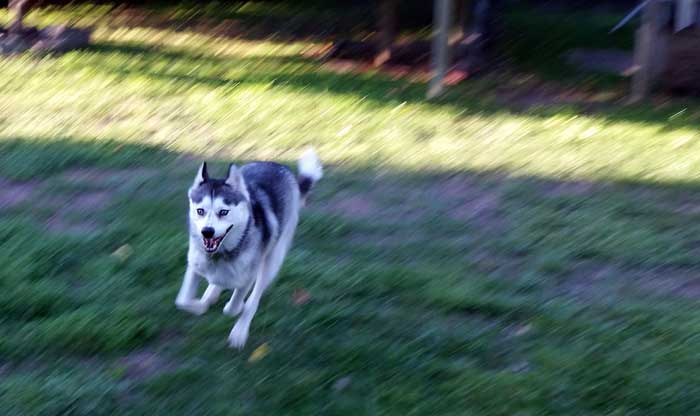
To overcome this problem, you need to train your Husky to obey your commands in any context.
This is done using proofing as explained later.
Understand Your Husky’s Triggers and Thresholds
Husky owners are often confused when their Husky seems to go wild and completely ignore them.
While some people mistakenly write this behavior off as normal for a Husky, you’ll get better results if you learn about triggers and thresholds.
A trigger is something that increases your Husky’s excitement or arousal level.
When you arrive home, that’s a trigger for your Husky. Another dog barking during a walk is a trigger. Your Husky seeing you pick up a leash is a trigger.
Some triggers only slightly raise a Husky’s excitement levels, while others can raise the excitement dramatically.
A threshold is an excitement or arousal level that when crossed, can completely change your Husky’s behavior.
For many Huskies, you walking in the front door is a big enough trigger to cross a threshold and set your Husky off on the zoomies.
A single dog barking is a trigger that may not break a threshold in your Husky, but a series of dogs barking during a walk can add up and cross a threshold.

Once you learn how to understand your Husky’s triggers and thresholds, you’ll find it easier to deal with behavior changes.
Rewards are Not Bribes
Some dog owners think that rewards are bribes and should not be used.
This is a big mistake.
Rewards are training tools you can use to keep your Husky focused and help them understand when they have done something good.
While it is possible to train a dog without using any rewards, it’s not an optimal training strategy.
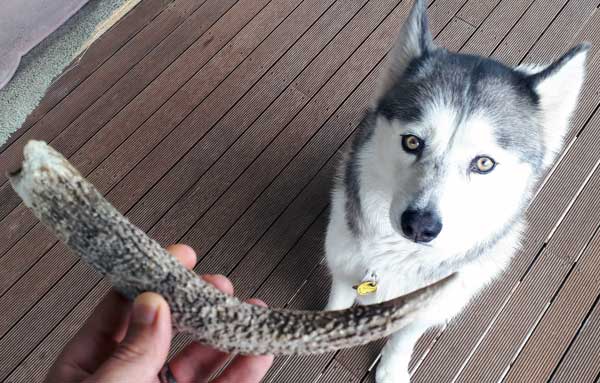
You can definitely use a variety of rewards as training tools. What is important is that you eventually phase out rewards so your Husky learns to obey commands even when they aren’t rewarded.
This is called fading and is an important training principle.
Use a Clicker
A clicker is an incredibly effective training tool that can dramatically improve the quality of your training sessions.
A clicker is a small hand-held device that clicks when you press a button.
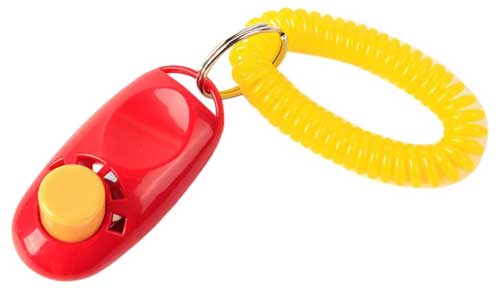
What makes this an excellent training tool is that it allows you to let your Husky know when they’ve done something good at the exact right time.
Timing rewards is a crucial step to effective training and there’s no better way to perfectly time a reward than using a clicker.
The reason so many professional dog trainers use clickers is because they make it easy for a dog to understand good behaviors at the right time.
I wish I knew about clickers earlier as it would have significantly cut down the time it took me to train my Huskies.
Get a few clickers here (link to Amazon) to start using clicker training.
Make it Easy to Win
When you introduce a new command to your Husky, make it easy for them to win.
This means you want to train at an ideal time, with no distractions. You need to be consistent and make it clear to your Husky what you want it to do.
Reward your Husky for taking any small step towards the desired behavior.
For example, if you want to train your Husky to stay, you don’t start by expecting your Husky to sit for 2-minutes before you reward them.
Instead, you reward your Husky for sitting for 2 seconds. Then next time reward them for sitting for 4 seconds. Then 10 seconds, then 20 seconds, etc.
The point is that you want to start any training by making it as easy as possible for your Husky to succeed.
This will encourage your Husky to keep trying and paying attention. You can gradually increase the challenge as your Husky learns.
If you start with something too challenging (making it too hard to win), your Husky will get frustrated.
Be Consistency in Your Training
Imagine a person wanting to learn how to play guitar. Would you expect that person to succeed if they only practiced once a week for five minutes?
Of course not. You would tell them that they need to practice every day if they want to see results.
Well, it’s the same with training your Husky.
If you want your Husky to learn, you need to be consistent and train them every day.
Use the same training methods each time and be consistent with your approach.
Make training your Husky a normal part of your daily routine and stick with it. If you can stick with consistently training your Husky, your Husky will learn faster and develop better behaviors.
Add Distractions and Challenges (Proofing)
So you’ve managed to train your Husky to sit on command. Great job.
But there’s a big difference between training your Husky to sit at home while you hold a handful of treats, and getting your Husky to sit at a busy park with other dogs running around.
How often have you heard people say that their Husky listens when at home, but as soon as other people or dogs visit, all the training goes out the window?
That’s a direct result of not proofing.
To solidify any training efforts, you need to gradually add challenges and distractions.
This is called proofing and is a crucial part of training your Husky.
Proofing teaches you Husky to ignore distractions and obey your commands in any situation.
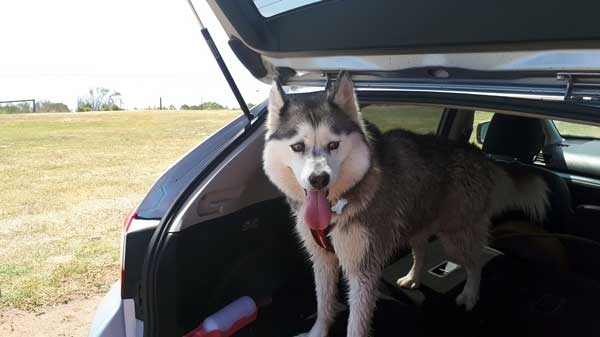
We trained Sasha to not jump out of the car until we’ve clicked in her leash and give her the command to jump down.
But will she follow all commands when there are other nearby dogs running around to distract her?
Once you successfully train your Husky to obey a command in a controlled environment with no distractions, your job isn’t over. Gradually add distractions to strengthen the command.
Train the Opposite (Counter-Conditioning)
A powerful training method when trying to stop your Husky from doing something is to train the opposite.
If you don’t want your Husky to jump on you, you don’t say ‘no’ or ‘down’ when they jump. Instead, you train them to want to stay on the floor or sit.
I once saw an impressive example of counter-conditioning when a professional dog trainer managed to train a yappy dog to stop barking.
How? Instead of trying to tell the dog to stop barking, he trained it to bark on command.
Crazy, right?
Well, once you train a dog to bark on command, you can also train them to stop barking on command.
When your training approach hasn’t been working, try looking for counter-conditioning opportunities.
You can see an example of counter-conditioning in my guide on training your Husky to stop jumping here.
Celebrate Small Wins
If you’ve ever tried to learn a musical instrument, learn a new language, or any other skill, you will know that it takes a long time before you start making progress.
Yet we often expect our dogs to learn new tricks or behaviors immediately.
If you want your Husky to enjoy your training sessions and for them to put in their best effort each time, you need to celebrate small wins.
Any time your Husky makes an improvement, reward them. It doesn’t matter how small the improvement is, if it’s a step in the right direction, reward them.
Celebrating small wins helps push your training forward and makes it easier for your Husky to understand when they’re doing something right and when they’re missing the mark.
Test Your Husky
Testing your Husky is an important way to assess recall.
If you’re able to get your Husky to sit patiently on command, that’s great. But can they sit patiently with a big bowl of food in front of them when you have your back turned?
Can you tell your Husky to stay and then walk away to a different room and expect them to still be there a minute later?
Try to come up with different ways you can test your Husky.
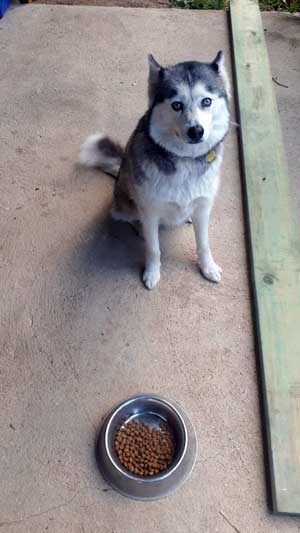
Sasha knows that she needs to wait for an ‘okay’ command before she is allowed to eat.
To test this behavior, I would walk away and watch her from out of view before giving the ‘okay’ command. It was a simple way of seeing how far the training had advanced.
Not only will these tests help you assess how far your Husky has come in their training, but each test trains your Husky with new challenges.
Common Training Mistakes
Using the above training tips will help your Husky learn new behaviors and tricks faster and easier.
At the same time, try to avoid the below training mistakes. Some things will degrade the effectiveness of your training and other things can completely ruin a training session.
Watch out for these common training mistakes if you want to get the best results when training your Husky.
Repeating a Command Over and Over
Do you want your Husky to obey your command the first time you say it or only after you say it five times?
When you repeat a command over and over, you’re training your Husky to ignore the first command.
Never repeat yourself when giving a command.
If your Husky doesn’t listen to a command, stop and reset the training scenario. Don’t repeat the command over and over in the hopes that your Husky will listen. It’ll do more harm than good.
This will be frustrating in the beginning, but it helps prevent lazy training and makes it clearer to your Husky that when you say something, it is important.
Extra tip: make sure you tell your friends and family not to repeat commands over and over. Other people can undermine your training efforts if they repeat commands constantly.
Stopping Too Soon
One of the reasons a lot of people feel that Huskies are untrainable is because they stop training too soon.
Here’s an example of why so many Husky trainers fall into the trap of stopping the training too soon:
Imagine a person training their Husky to listen to sit, stay, and come. After a few weeks of training at home, their Husky obeys the commands every time. The owner thinks the training was a success and stops the training.
A few weeks pass and the owner decides to take their Husky to the park. Surprise, surprise, their Husky doesn’t listen to a single command.
The Husky runs around like crazy and seems to completely ignore the owner.
The owner mumbles to himself “I knew Huskies were untrainable”.
See the problem in the above example?
The owner in the above example only trained their Husky at home in controlled conditions. No time was spent introducing distractions or training in different environments.
This means the Husky only learned those commands in one environment and only in certain conditions.
That’s not enough. As explained earlier in the tip on proofing, you need to train your Husky to obey commands in all environments and all conditions.
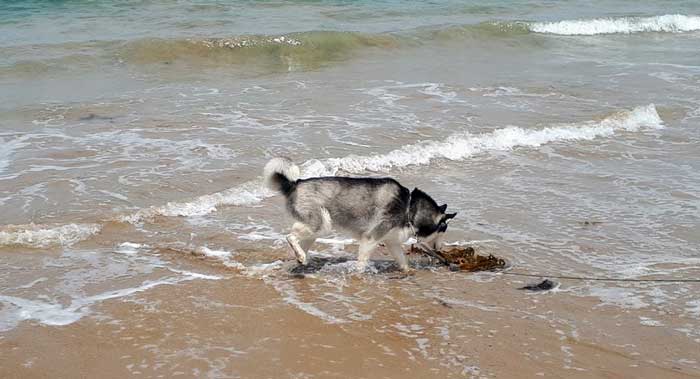
Train your Husky to listen to your commands whether they’re at home, at the park, beach, city, or in the presence of other people or dogs.
Stopping your training too soon can have a devastating impact on your Husky’s obedience.
Being Impatient
While Huskies are intelligent and will learn quickly, don’t expect to see results quickly.
Be patient with your Husky and stick to your training. Don’t give up if you don’t see results or when people say ‘Huskies are untrainable’.
It doesn’t matter how long it takes for your Husky to learn to obey a command, what matters is that you keep training them so they do learn the command.
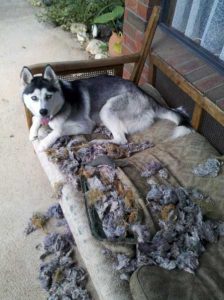
If today’s training didn’t go well, that’s okay. Try again tomorrow.
Lack of Consistency
Not being consistent is the most common training mistake people make. Your Husky needs consistency to be able to learn what you want them to do and why they should do it.
You need to be consistent in the following areas:
- How long your training sessions go for
- Training every day
- Using the same training methods each time
- Timing of rewards
- Your mood
For example, imagine one day you try to train your Husky using Positive Reinforcement methods, then the next day you use Correction training.
How is your Husky meant to understand what to do if you keep changing the training methods?
Make each training session feel the same to make it easier for your Husky to learn what is expected of them.
Don’t train when you’re in a bad mood or you’re tired, as you will be more likely to make mistakes during training.
Consistency can turn an average trainer into a good trainer. Inconsistency will turn a good trainer into a bad trainer.
Learn more about training a Husky in this guide. The guide covers the difficulty of training a Husky and how to get better results.
